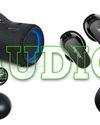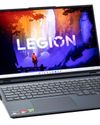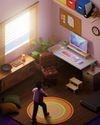New research from Weill Cornell has isolated four distinct neurotypes of depression. But its knock-on effects are much wider in scope. The work establishes biomarkers for depression, and it sheds new light on the physical underpinnings of psychological disease.

The study captured fMRI brain scans from more than a thousand participants in order to answer a question: What’s different between the brains of healthy people and those with depression? What it found is that within the umbrella category of “people who have major depressive disorder,” are (at least) four distinct neurotypes, each with its own cluster of associated symptoms. And the neurotypes aren’t random. They align with their symptom clusters along two major axes: anxiety and anhedonia (the inability to feel pleasure). The authors refer to the axes as a shared pathological core, by which we can understand the relationship between brain connectivity and the symptoms of depression. These newly discovered patterns of abnormal connectivity are biomarkers for depression: something neuroscience has been chasing for a long while, without much success.
From the paper (emphasis ours): “We found that, superimposed on this shared pathological core, distinct patterns of abnormal functional connectivity differentiated the four biotypes and were associated with specific clinical-symptom profiles. For example, as compared to controls, reduced connectivity in frontoamygdala networks, which regulate fear-related behavior and reappraisal of negative emotional stimuli, was most severe in biotypes 1 and 4, which were characterized in part by increased anxiety. By contrast, hyper connectivity in thalamic and frontostriatal networks, which support reward processing, adaptive motor control and action initiation, were especially pronounced in biotypes 3 and 4 and were associated with increased anhedonia and psychomotor retardation. And reduced connectivity in anterior cingulate and orbitofrontal areas supporting motivation and incentive-salience evaluation was most severe in biotypes 1 and 2, which were characterized partly by increased anergia and fatigue.”
Esta historia es de la edición February 2017 de PC Magazine.
Comience su prueba gratuita de Magzter GOLD de 7 días para acceder a miles de historias premium seleccionadas y a más de 9,000 revistas y periódicos.
Ya eres suscriptor ? Conectar
Esta historia es de la edición February 2017 de PC Magazine.
Comience su prueba gratuita de Magzter GOLD de 7 días para acceder a miles de historias premium seleccionadas y a más de 9,000 revistas y periódicos.
Ya eres suscriptor? Conectar

AUDIO
AUDIO

SMART HOME
SMART HOME

T Mobile
Mobile

Lenovo Legion 5 Pro Gen 7 (2022): Nearly an Editors' Choice
A solid gaming laptop for under 2,000

Apple TV 4K 3rd Generation): Best for the Apple-Centric
A powerful, feature-rich media streamer that’s pricier than most

20 Tips for Leveling Up Your Work-at-Home Game
Whether you're new to working remotely or just looking fo do if beffer, fhese fips can help you stay productive and maintain balance.

12 Google Calendar Tricks You're Probably Not Using
Wondering how to share your Google Calendar? Want to add a new calendar? Here are the tips you need.

SimpliSafe Home Security System: Affordable Ease of Use
Affordable security with a focus on flexibility

Honda Unveils First All-Electric SUV, Built on GM's Battery Platform
The Honda Prologue battery-electric SUV arrives in 2024 and will use the Ultium battery technology developed by General Motors.

We Must Save Streaming Video Before It’s Too Late
A generation of art risks extinction if the companies that own streaming services don’t believe their vast libraries are worth preserving. We have to act now to save it.